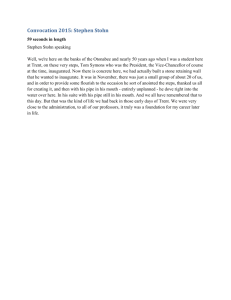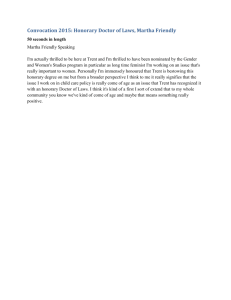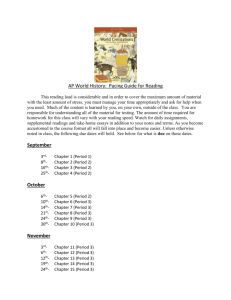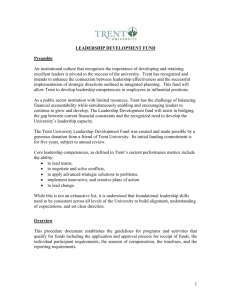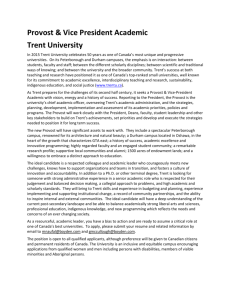History 439
advertisement
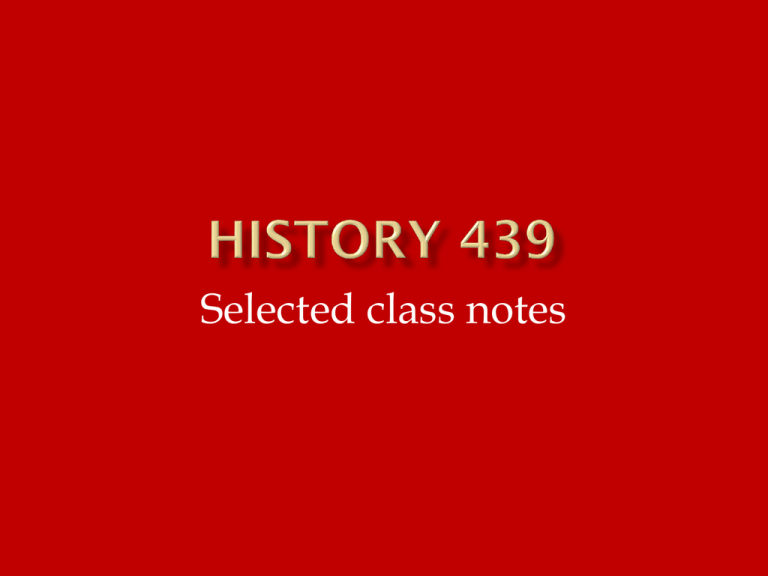
Selected class notes Accommodation: learning languages, conversation, controlled syncretism: inculturation; acculturation Chinese Rites Controversy Propaganda Fide = Congregation for the Propagation of the Faith (1622) Reduction Requirement Encomiendo Patronato On Securing the Salvation of the Indies (1588) Galileo Giovanni Botero, Reason of State Machiavelli, The Prince useful / good immanent pragmatism Providentialist Monti di pieta…usury Introduction to a Devout Life: Francis de Sales: spiritual classic: Imitation of Christ, Spiritual Exercises = Ignatius of Loyola THE Jesuit Jansenism, Jansenist vs. Jesuits Council of Trent: responds to Protestantism: defines beliefs, doctrines; responding to abuses, problems in the Church hierarchy that need correction more universal: missionary work Religious orders, confraternities: Women: teaching (Ursulines), Daughters of Charity Political power: decline in power for Church; conciliarism Reformation Papal power: bishops, missionary activity Paulo Segneri, SJ Paul Ragueneau, SJ Edmund Campion, SJ Robert Bellarmine, SJ Louis Bourdaloue, SJ Peter Canisius, SJ Francis Xavier, SJ Adam Contzen, SJ Matteo Ricci, SJ Friedrich von Spee, SJ Robert de Nobili, SJ José de Acosta, SJ The test consists of two parts. Both parts are worth 50%. You are allowed the following aids: your copy of the readings for Hist. 439 assigned for Week 1 to Week 6, inclusive, along with one sheet of paper for references, an outline, etc. to help you write the essay in response to the questions in Part 2. You must submit the reference sheet with your answer. If you do quote directly from the readings, please supply page references. You must submit the aids for the test to the supervisor before the test begins. You may not have these aids with you while you answer Part 1. You will complete Part 1 on the test paper. When you have completed Parts 1, you will submit your answers to the supervisor and then collect the aids for the test and proceed to Part 2, which you will answer in the examination booklet. Please note: All submissions of answers to Part 1 will be considered final without exception. Short answer: fill in the blank Don’t show that you are not sure of your answer by adding question marks. Read the question carefully Was the Council of Trent the defining event of early modern Catholicism? Answer this question in essay format based on information acquired from the assigned readings between Week 1 and Week 6, inclusive. Use the booklet provided. Skip lines! Superior answers will directly address the relevant question and will be based on a clear, well-defined thesis statement sustained with logical consistency and by compelling evidence taken from the readings in the form of quotations and/or specific references. If you quote from or make a specific reference, please supply page numbers in parentheses. Do not use footnotes or endnotes. Was the Council of Trent the defining event of early modern Catholicism? Review readings, i.e. gather sources Find evidence: look at indices, chapter titles, subtitles Don’t worry about word count! Make notes: categories: themes Weigh evidence. Establish the terms of reference: establishing conceptual clarity. Elaborate…say why…take a perspective Impact on various Catholic countries, who received it, implemented it Consistency between what Trent said and what Catholics did. What did Catholics do? Did Trent tell them to do it? Did Trent have anything to do with early modern Catholicism? Take a longer view Look for alternatives; compare with another event Vantage points: secular, sacred, political, economic, cultural (art history) Your essays are due on Monday, 25 June at 10:00 am in AQ 6230 (my office). Please submit your essays on time! I hope to return the midterms to you when you submit your essays. Focus on only one topic Use only relevant sources. Build on a firm foundation. 439 sources number of sources Substantial sources Use prescribed format for footnotes, bibliography Elements of citation. Introduction: Be succinct. State your answer to the question. Do not get bogged down in reviewing the history of all the terms used to name Catholicism. Body: Be precise and persuasive. Employ compelling evidence from your sources to support your answer to the question = your argument. You don’t need to repeat the obvious: “this proves my thesis,” “this is an example of…” Conclusion. Be decisive and imaginative. Do not repeat your introduction. Show the significance of your argument.
